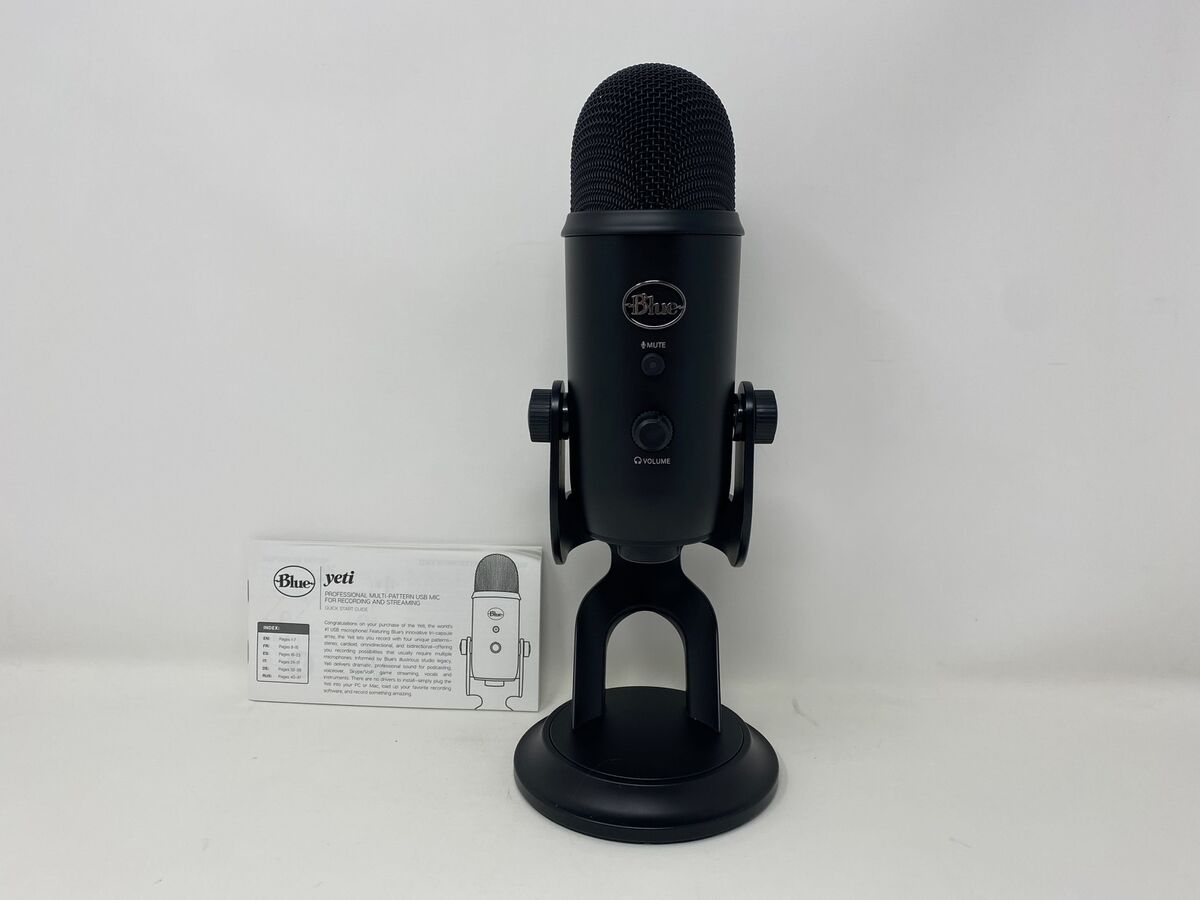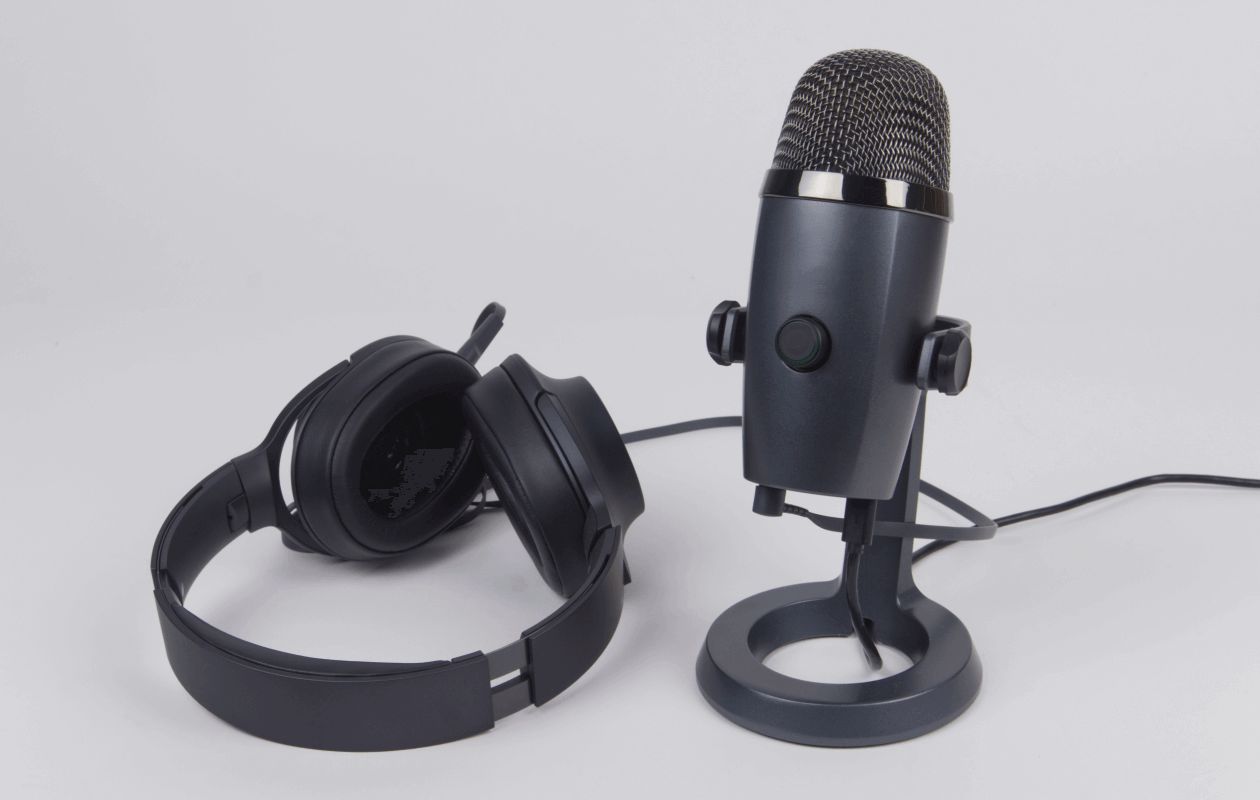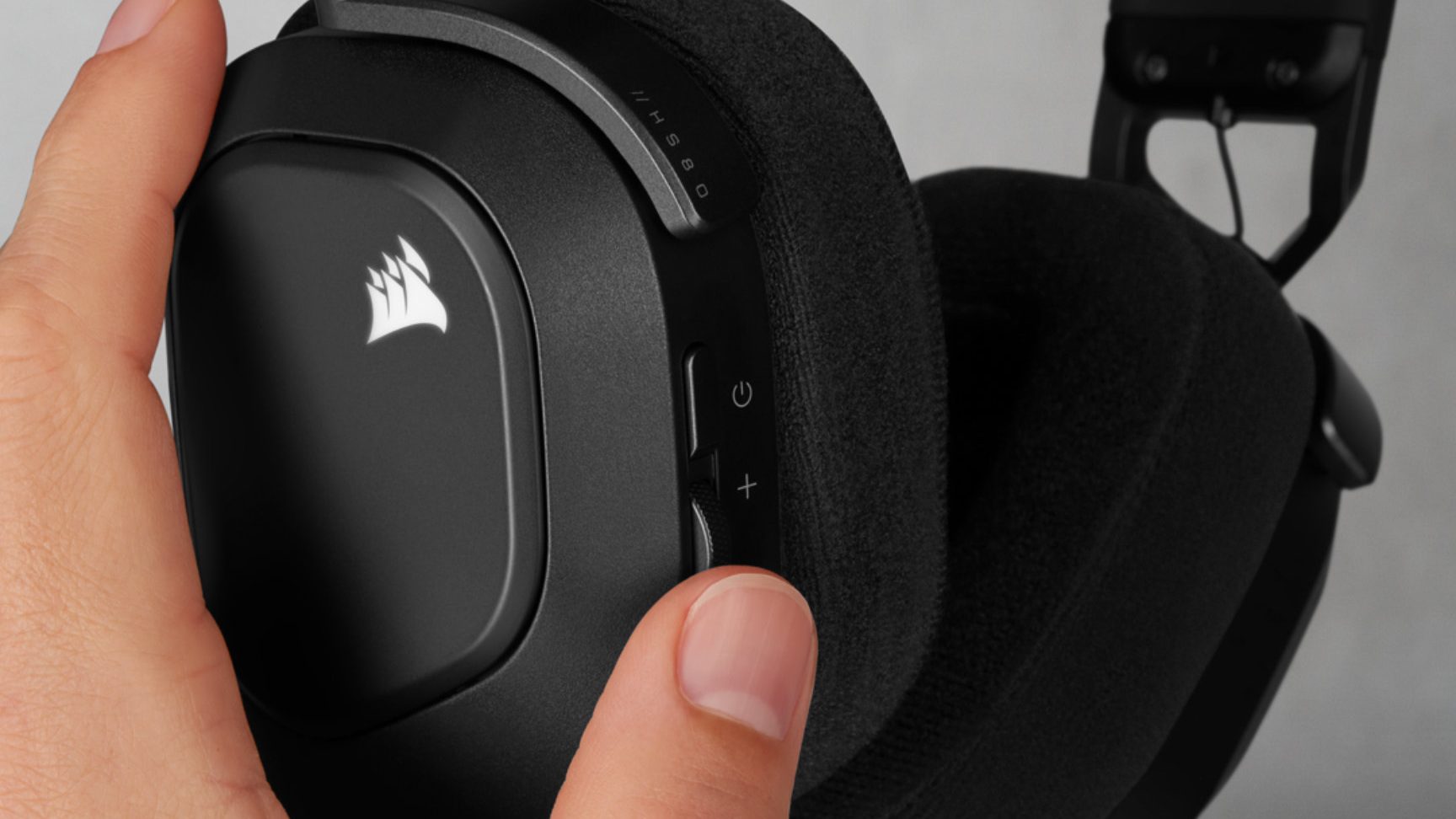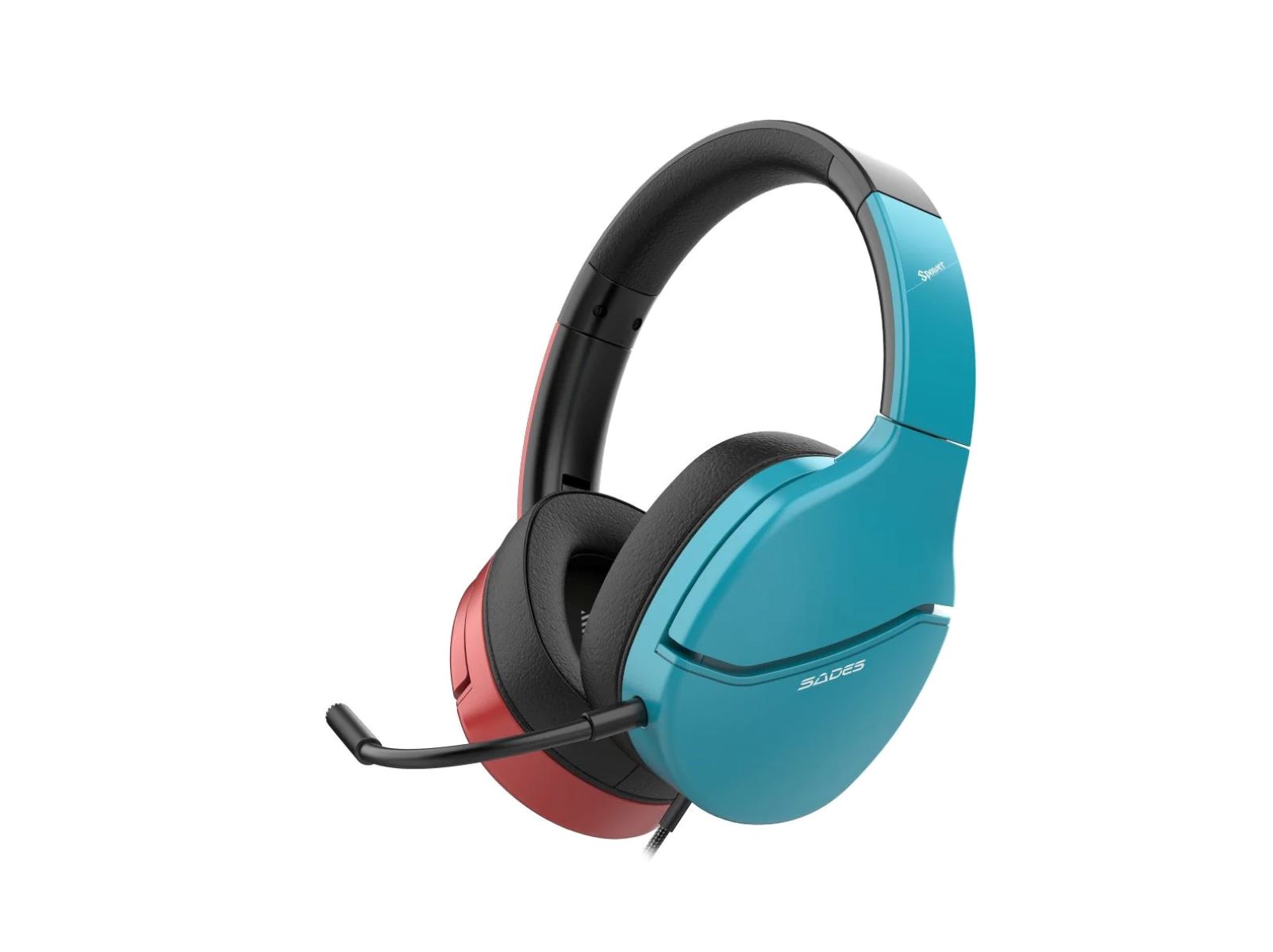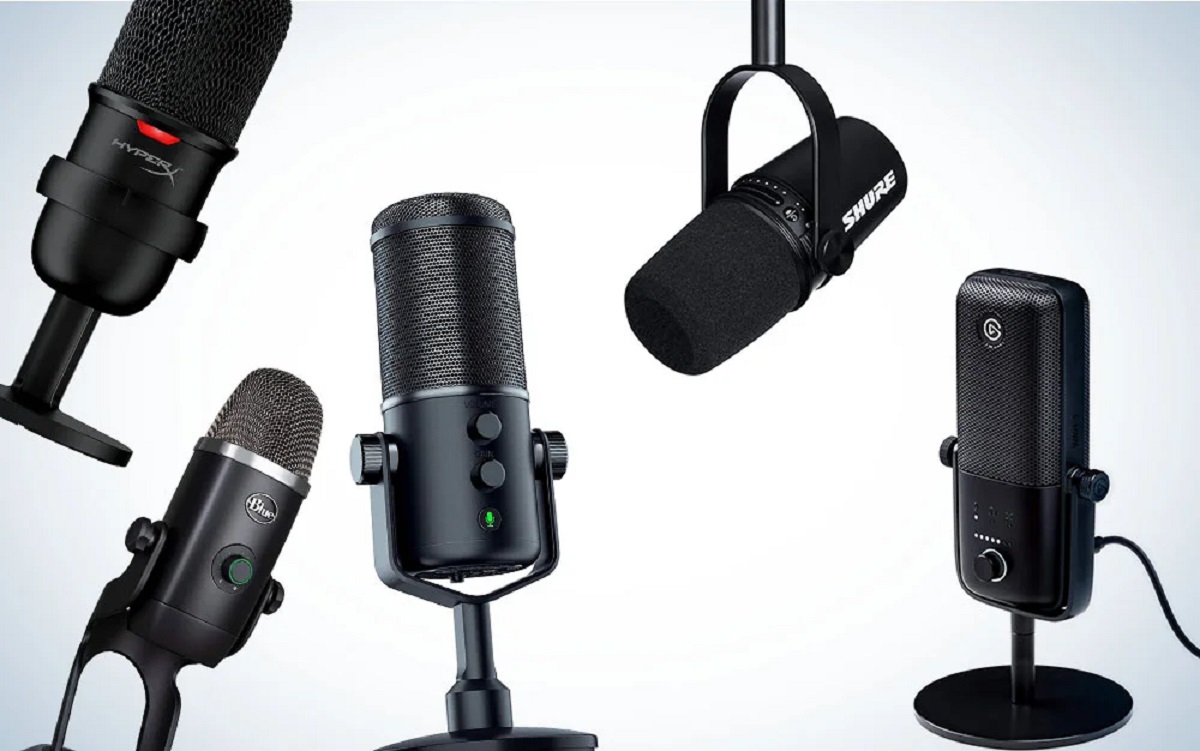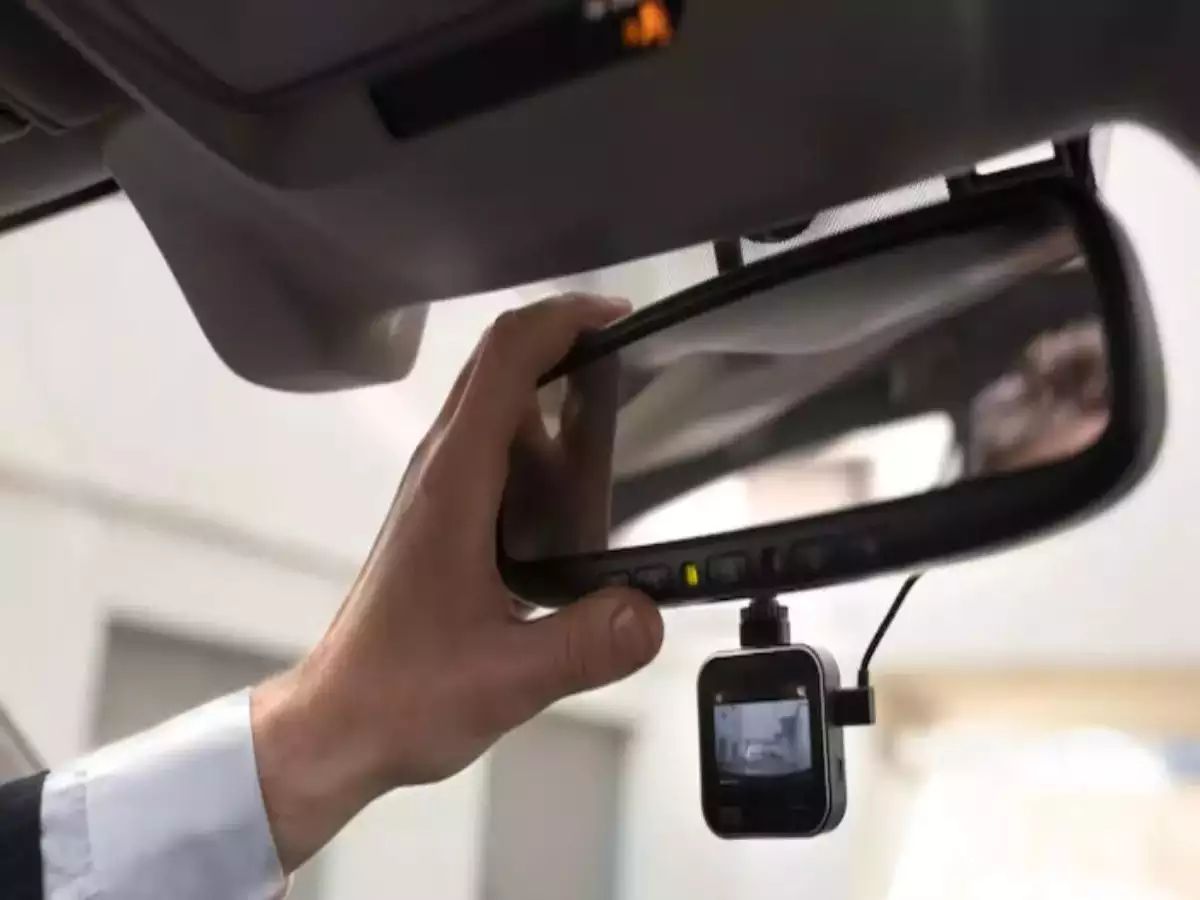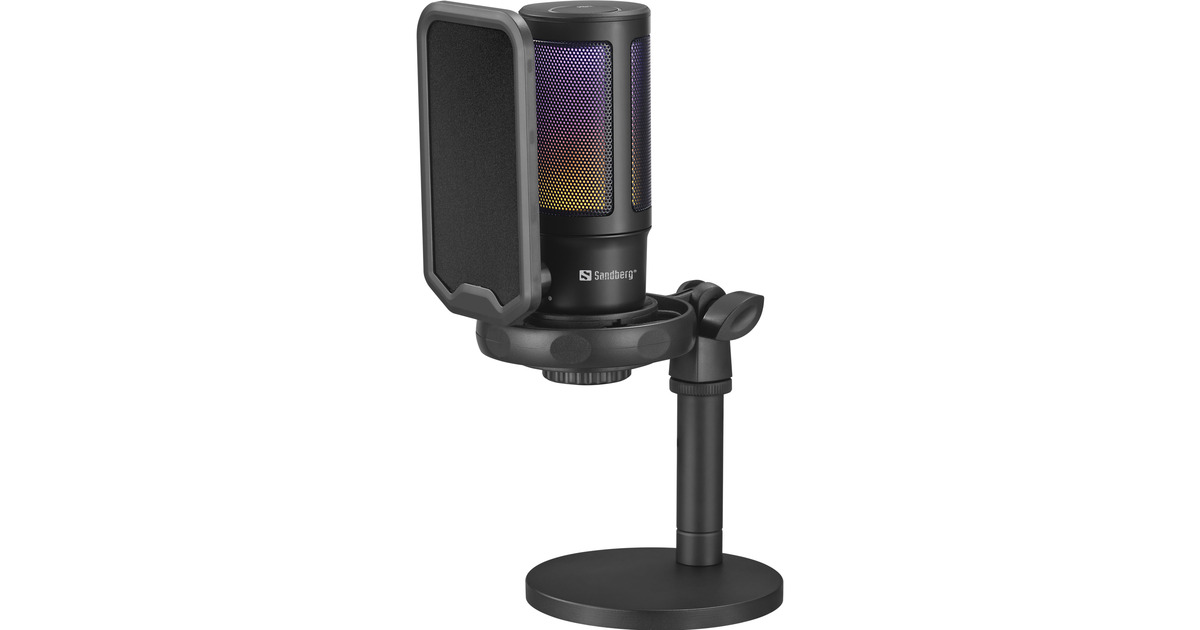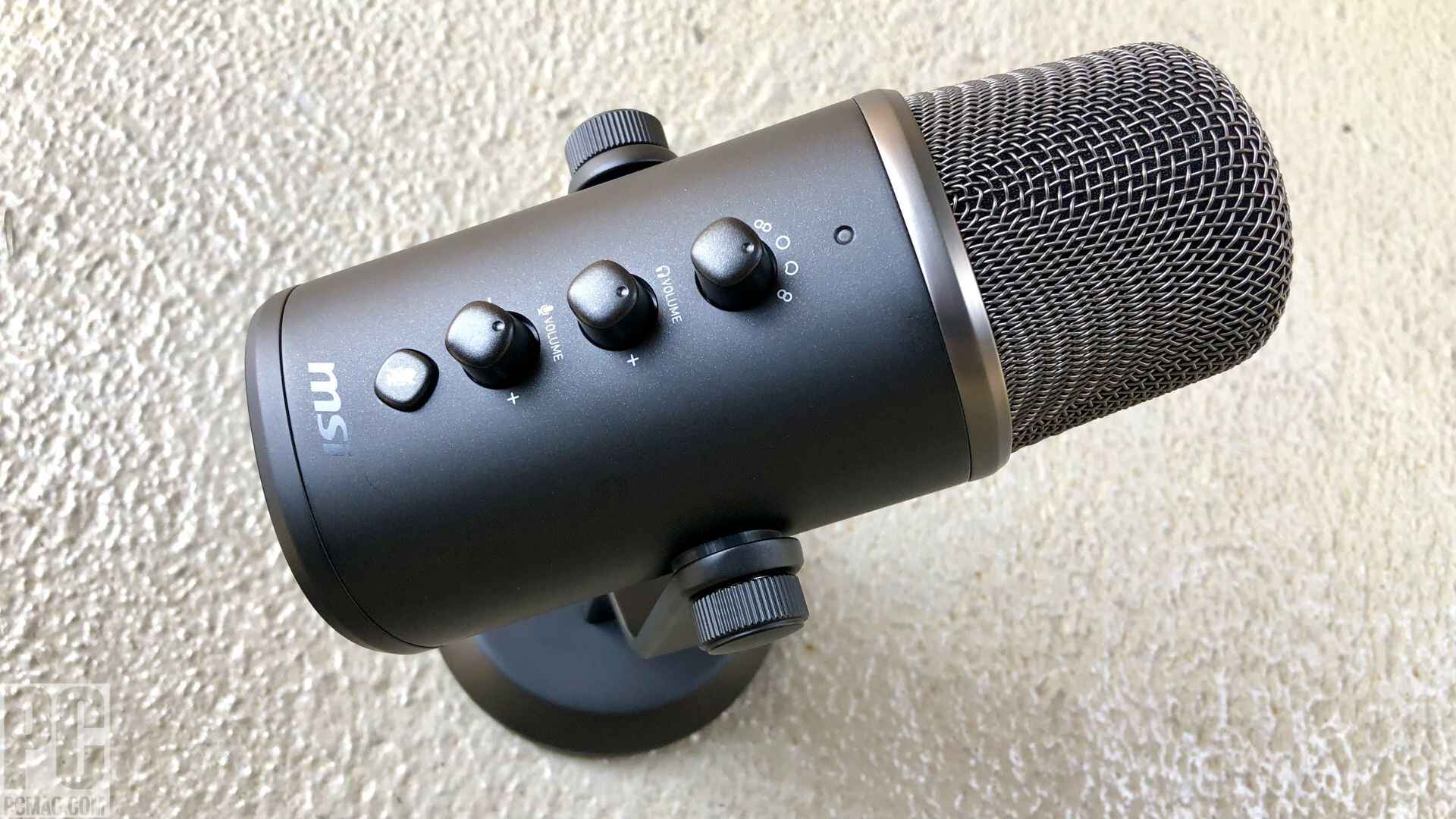Introduction
Having a loose USB microphone can be frustrating, especially if you rely on it for recording or communication purposes. Whether you use it for podcasting, streaming, video conferencing, or simply recording your voice, a loose connection can result in poor audio quality or a complete lack of functionality. It’s important to address the issue promptly to ensure that you can continue to use your microphone effectively.
In this article, we will explore the common causes of a loose USB microphone and provide troubleshooting steps to help you fix the issue. We will discuss the importance of checking the USB cable connection, using a different USB port or adapter, testing the microphone on a different device, updating or reinstalling device drivers, resetting microphone settings, and considering replacement options if all else fails.
By following these steps, you can potentially resolve the problem and regain the optimal performance of your USB microphone. Let’s get started and explore the various solutions to tackle a loose USB microphone!
Understanding the Issue: What Causes a Loose USB Microphone?
A loose USB microphone can be caused by various factors. It’s essential to understand these issues to effectively troubleshoot and fix the problem. Here are some common causes:
1. Loose USB Cable: One of the most prevalent reasons for a loose USB microphone is a loose or damaged USB cable. Over time, constant movement or accidental tugs can loosen the connection between the cable and the microphone, resulting in a poor or unstable connection.
2. Worn-out USB Port: Another factor contributing to a loose USB microphone is a worn-out or damaged USB port on your computer or device. If the port is loose or has become faulty, it can cause the microphone to have an unstable connection, leading to audio issues.
3. Incompatible USB Port or Adapter: Sometimes, a loose USB microphone can occur if you’re using an incompatible USB port or adapter. USB ports and adapters come in different versions (USB 2.0, USB 3.0) and configurations (Type-A, Type-C), and using a non-compatible combination can lead to a weak connection.
4. Outdated or Corrupted Device Drivers: Device drivers are software components that enable communication between your USB microphone and your computer’s operating system. If the device drivers are outdated, corrupted, or not installed correctly, it can result in a loose connection or even non-functionality of the microphone.
5. Settings or Configuration Issues: Sometimes, the microphone settings or configurations may be causing the problem. Incorrect settings or conflicts with other devices or software can result in a loose USB microphone.
Understanding these potential causes will help you identify and tackle the issue effectively. In the next sections, we will provide troubleshooting steps to address each of these causes and resolve the loose USB microphone problem. Let’s start by checking the USB cable connection.
Common Problems with a Loose USB Microphone
A loose USB microphone can lead to several issues that can impact your audio quality and overall user experience. Let’s explore some of the common problems you may encounter when dealing with a loose USB microphone:
1. Intermittent or Poor Audio Quality: A loose connection can result in intermittent audio dropouts or distortions. This can make it difficult for others to hear you clearly during podcasts, video calls, or recordings. The audio may sound muffled, crackling, or even cut out entirely, leading to a frustrating experience.
2. Inconsistent Microphone Response: When the USB microphone connection is loose, you may notice inconsistent microphone responsiveness. It may pick up sounds inconsistently, making your voice sound low or distorted. This can affect the overall clarity and accuracy of your recordings or communication.
3. Lack of Microphone Detection: In some cases, a loose USB microphone may not be detected by your computer or device at all. This can prevent you from using the microphone for any purpose, rendering it useless. The microphone may not show up in the list of available input devices, or you may receive error messages indicating a connection problem.
4. Unstable or Dropping Connection: A loose USB microphone can result in an unstable connection. It may disconnect and reconnect randomly, causing interruptions during recordings or communication sessions. This can significantly affect your workflow and result in unreliable performance.
5. Inability to Control Microphone Settings: When your USB microphone connection is loose, you may face difficulty in controlling microphone settings. Adjusting volume levels, muting or unmuting the microphone, or accessing advanced features may become challenging. This lack of control can hinder your ability to optimize the microphone for your specific needs.
These problems highlight the importance of addressing a loose USB microphone promptly. By following the troubleshooting steps outlined in the subsequent sections, you can overcome these issues and restore the functionality and reliability of your microphone.
Troubleshooting Steps to Fix a Loose USB Microphone
If you are experiencing a loose USB microphone, there are several troubleshooting steps you can take to fix the issue. Follow these steps to potentially resolve the problem and regain optimal performance:
Step 1: Check the USB cable connection: Start by checking the USB cable connection between the microphone and your computer or device. Ensure that the cable is securely plugged into both the microphone and the USB port. If the connection feels loose, try unplugging and reinserting it firmly. If the cable is damaged, consider replacing it with a new one.
Step 2: Use a different USB port or adapter: Sometimes, the USB port or adapter you are using may be the cause of the loose connection. Try using a different USB port on your computer or try using a USB adapter if your device has different port options. This can help determine if the issue is specific to the port or adapter being used.
Step 3: Try the microphone on a different device: To rule out any device-specific issues, test the USB microphone on a different computer or device. If it works fine on another device, it indicates that the problem may be with your initial computer or device settings. This step can help you identify whether the issue lies with the microphone or the device it is connected to.
Step 4: Update or reinstall the device drivers: Outdated, corrupted, or incompatible device drivers can cause a loose USB microphone. Ensure that you have the latest drivers for your microphone installed. You can visit the manufacturer’s website or use device manager tools to update or reinstall the drivers. This step can address any software-related issues that may be affecting the microphone’s performance.
Step 5: Reset the microphone settings: If the settings or configurations for the USB microphone are incorrect or conflicting with other devices, resetting the microphone settings may help. Access the sound settings on your computer or device and locate the microphone settings. Reset the settings to their default values or adjust them according to your preferences. This can resolve any conflicts or inconsistencies causing the loose connection.
Step 6: Contact customer support or consider replacement: If you have tried all the above steps and the issue persists, it may be time to reach out to the manufacturer’s customer support. They can provide additional troubleshooting assistance or guide you on possible repairs or replacements. In some cases, if the USB microphone is damaged beyond repair, you may need to consider purchasing a new one.
By following these troubleshooting steps, you increase the chances of fixing a loose USB microphone. However, if the issue persists or you are unsure about performing any of these steps, it is advisable to seek professional assistance or guidance.
Step 1: Check the USB Cable Connection
The first step in troubleshooting a loose USB microphone is to check the USB cable connection. A loose or damaged USB cable can cause connection issues and result in a poor or unstable connection. Follow these steps to ensure a secure and functioning USB cable connection:
1. Inspect the USB cable: Take a close look at the USB cable connecting your microphone to your computer or device. Look for any visible signs of damage, such as frayed wires or bent connectors. If you notice any damage, it’s advisable to replace the cable with a new one to ensure a reliable connection.
2. Unplug and reinsert the USB cable: If there are no visible signs of damage, unplug the USB cable from both the microphone and the USB port. Then, firmly reinsert the cable into both ends, ensuring a snug fit. Avoid applying excessive force but make sure the connection is secure.
3. Try a different USB port: If the connection still feels loose after reinserting the cable, try plugging it into a different USB port on your computer or device. Sometimes, the USB port itself may be worn out or have a loose connection. Testing a different port can help determine if the issue lies with the port or the cable.
4. Use a USB extension cable or adapter: If you are using a USB extension cable or adapter, ensure that it is functioning correctly. Sometimes, these additional components can introduce instability into the connection. Try connecting the cable directly to the USB port without using any extensions or adapters to eliminate potential sources of the problem.
5. Secure the cable: Once you have checked the USB cable connection and confirmed that it is not damaged, consider securing the cable to prevent any accidental tugs or movement that can loosen the connection. You can use zip ties, adhesive clips, or cable management solutions to keep the cable in place and reduce the risk of it becoming loose again in the future.
By thoroughly checking the USB cable connection and ensuring a secure fit, you can eliminate one of the most common causes of a loose USB microphone. If the problem persists, it may be necessary to proceed to the next troubleshooting step.
Step 2: Use a Different USB Port or Adapter
If your USB microphone connection remains loose even after checking the USB cable connection, the next step in troubleshooting is to try using a different USB port or adapter. Sometimes, the USB port you are using may be the cause of the instability. Follow these steps to determine if the issue lies with the USB port:
1. Identify available USB ports: Take note of all the USB ports available on your computer or device. Some devices may have multiple USB ports located on different sides or areas. It’s important to have an overview of all the available options.
2. Try a different USB port: Disconnect the USB cable from its current port and plug it into a different USB port on your computer or device. Ensure that the new port is compatible with the USB version of your microphone (e.g., USB 2.0, USB 3.0) and that it provides a stable and secure connection.
Note: If you are using a USB hub or extension cable, try connecting the microphone directly to the USB port without any intermediary devices. Sometimes, USB hubs or extension cables can introduce instability into the connection.
3. Test with multiple USB ports: If your computer or device has multiple USB ports, repeat the process of trying different ports to see if any of them provide a more secure connection. This step will help you identify if the loose connection is specific to one particular port or if it occurs across all USB ports.
4. Consider using a USB adapter: If your computer or device only has USB-C ports and your USB microphone uses a USB-A connector, you may need to use a USB adapter to establish a connection. Ensure that the USB adapter is functioning correctly and is compatible with your microphone. Some adapters may introduce instability, so try using a different adapter if available.
By utilizing different USB ports or adapters, you can determine if the loose connection is related to a specific port or adapter. If the USB microphone connection remains loose across all ports, it may be necessary to proceed to the next troubleshooting step.
Step 3: Try the Microphone on a Different Device
If you’re still experiencing a loose USB microphone connection after checking the USB cable and trying different ports, the next troubleshooting step is to test the microphone on a different device. This helps to determine if the issue is specific to your computer or device settings or if it’s a problem with the microphone itself. Follow these steps to test the microphone on a different device:
1. Select an alternative device: Choose another computer, laptop, or device on which you can test the USB microphone. Ideally, select a device with a different operating system or set up than your current computer to ensure a fresh testing environment.
2. Connect the USB microphone: Plug the USB microphone into an available USB port on the alternative device. Ensure that the connection is secure and that the microphone is recognized by the alternative device. If necessary, install any required drivers for the microphone on the new device.
3. Test the microphone functionality: Open an audio recording or communication application on the alternative device and test the USB microphone. Speak into the microphone, and check if the audio is clear and stable. Record a short audio clip and listen back to it to ensure optimal performance.
4. Observe the connection: During the testing process, pay attention to the USB microphone connection. Check whether the connection feels more secure or stable on the alternative device compared to your initial computer or device. This observation can help determine if the loose connection is specific to your device or if it persists across different devices.
5. Compare results: Compare the results between the different devices. If the USB microphone works fine on the alternative device and the connection feels secure, it indicates that the issue may be with your initial computer or device settings. In such cases, focus on troubleshooting the computer or device to resolve the loose connection problem. However, if the microphone still exhibits a loose connection on the alternative device, it suggests that the microphone itself may be the cause, and further troubleshooting or contacting customer support may be necessary.
Testing the USB microphone on a different device helps isolate the root cause of the loose connection. Whether it unveils a device-specific issue or highlights a problem with the microphone, this step provides valuable information for the next troubleshooting steps or potential solutions.
Step 4: Update or Reinstall the Device Drivers
If you are still encountering a loose USB microphone connection, it might be due to outdated or corrupted device drivers. Device drivers act as the communication bridge between your USB microphone and your computer’s operating system. Issues with these drivers can lead to a variety of problems, including a loose connection. Follow these steps to update or reinstall the device drivers:
1. Identify the microphone model and manufacturer: Determine the specific model and manufacturer of your USB microphone. This information can typically be found on the microphone itself or on the product documentation.
2. Visit the manufacturer’s website: Go to the manufacturer’s official website. Look for a support or downloads section where you can find the latest drivers for your USB microphone model. Ensure that you download the correct drivers that match your operating system.
3. Uninstall existing drivers: Before installing new drivers, it may be helpful to uninstall any existing drivers for your USB microphone. To do this, go to the Device Manager on your computer and locate the USB microphone under the “Audio inputs and outputs” or “Sound, video, and game controllers” section. Right-click on the microphone and select “Uninstall.” Make sure to check the box that says “Delete the driver software for this device” before confirming the uninstallation.
4. Install the latest drivers: After uninstalling the existing drivers, run the driver installation file you downloaded from the manufacturer’s website. Follow the on-screen instructions to install the latest drivers for your USB microphone. Restart your computer if prompted to complete the installation process.
5. Verify the connection: Once the new drivers are installed, reconnect your USB microphone to your computer and check if the connection feels more secure. Test the microphone to see if the loose connection issue has been resolved.
Note: In some cases, Windows or your operating system may automatically install generic drivers for your USB microphone. While these drivers may work, it’s recommended to install the manufacturer’s specific drivers for optimal performance.
If updating or reinstalling the drivers does not resolve the loose connection issue, consider contacting the manufacturer’s customer support for further assistance. They may be able to provide additional troubleshooting steps or help determine if there is a hardware-related problem with the USB microphone.
Step 5: Reset the Microphone Settings
If you are still experiencing a loose USB microphone connection, it may be worth resetting the microphone settings on your computer or device. Incorrect settings or conflicts with other devices or software can cause a loose connection. Follow these steps to reset the microphone settings:
1. Access the sound settings: Open the sound settings on your computer or device. The method to access these settings may vary depending on your operating system. Typically, you can find the sound settings in the Control Panel or System Preferences.
2. Locate the microphone settings: Within the sound settings, navigate to the section related to microphone settings. This may be labeled as “Recording,” “Input Devices,” or a similar term. Look for the specific settings related to your USB microphone.
3. Reset the settings to default: Look for an option to reset the microphone settings to their default values. This option may be labeled as “Restore Defaults,” “Reset Settings,” or similar terminology. Select this option to revert the microphone settings to their original configuration.
4. Adjust settings if necessary: After resetting the settings, you can readjust any necessary parameters to optimize the performance of your USB microphone. This may include adjusting the microphone volume, gain, or any other specific settings that suit your needs.
5. Check the connection: Once the settings are reset and adjusted, connect your USB microphone to your computer and check if the connection feels more secure. Test the microphone to see if the loose connection issue has been resolved.
Additionally, ensure that there are no conflicts with other devices or software that may be affecting the USB microphone connection. Check for any conflicting applications or devices that may be interfering with the microphone’s functionality.
If resetting the microphone settings does not fix the loose connection issue, it may be necessary to consider other troubleshooting steps or contact customer support for further assistance.
Step 6: Contact Customer Support or Consider Replacement
If you have tried all the previous troubleshooting steps and are still experiencing a loose USB microphone connection, it may be time to consider contacting customer support or exploring replacement options. Here’s what you can do:
1. Contact customer support: Reach out to the manufacturer’s customer support for assistance. Explain the issues you have been experiencing, the troubleshooting steps you have already taken, and any relevant details about your USB microphone model. They may be able to provide additional guidance or specific solutions to address the loose connection problem.
2. Check warranty and return policies: If your USB microphone is still under warranty, review the warranty terms and conditions. If the loose connection issue is considered a defect, you may be eligible for a repair, replacement, or refund. Additionally, familiarize yourself with the return policies of the retailer or website where you purchased the microphone, in case you need to consider a return or exchange.
3. Consider replacement: If the loose connection problem persists and the USB microphone is out of warranty or cannot be fixed, it may be necessary to consider purchasing a new one. Look for USB microphones that are known for their durability, secure connections, and positive reviews to ensure a reliable and stable connection in the future.
4. Seek professional assistance: If you prefer not to troubleshoot the issue further or are unsure about performing any additional steps, consider seeking professional assistance. A knowledgeable technician or audio specialist may be able to diagnose and resolve the loose connection problem efficiently.
Remember to backup any important data or files associated with the USB microphone before any potential repair or replacement to avoid losing any valuable recordings or settings.
By reaching out to customer support or considering replacement options, you can explore further avenues to address the loose USB microphone connection. This step ensures that you have exhausted all possible solutions and can make an informed decision moving forward.
Conclusion
Dealing with a loose USB microphone can be frustrating, but by following the troubleshooting steps outlined in this article, you can address the issue effectively. Checking the USB cable connection, using a different USB port or adapter, testing the microphone on a different device, updating or reinstalling device drivers, resetting microphone settings, and contacting customer support or considering replacement are all viable solutions to tackle a loose USB microphone.
Throughout the process, it is crucial to ensure a secure and stable connection between the USB microphone and your computer or device. By addressing common issues such as a loose USB cable, incompatible USB ports, outdated drivers, or incorrect settings, you increase the chances of resolving the loose connection problem.
However, if you have tried all the troubleshooting steps and the loose connection issue persists, it may be time to contact customer support for further assistance. They can provide additional troubleshooting guidance or help determine if there is a hardware-related problem with the USB microphone. Additionally, consider reviewing warranty and return policies or exploring replacement options if necessary.
Remember, each step in the troubleshooting process is important and can help narrow down the cause of the loose connection. Patience and thoroughness are key to resolving the issue and restoring the optimal performance of your USB microphone.
We hope that this article has provided you with valuable insights and guidance to address a loose USB microphone. By following these steps, you can enjoy a more stable and reliable connection, ensuring an enhanced audio experience for all your recording, streaming, and communication needs.







